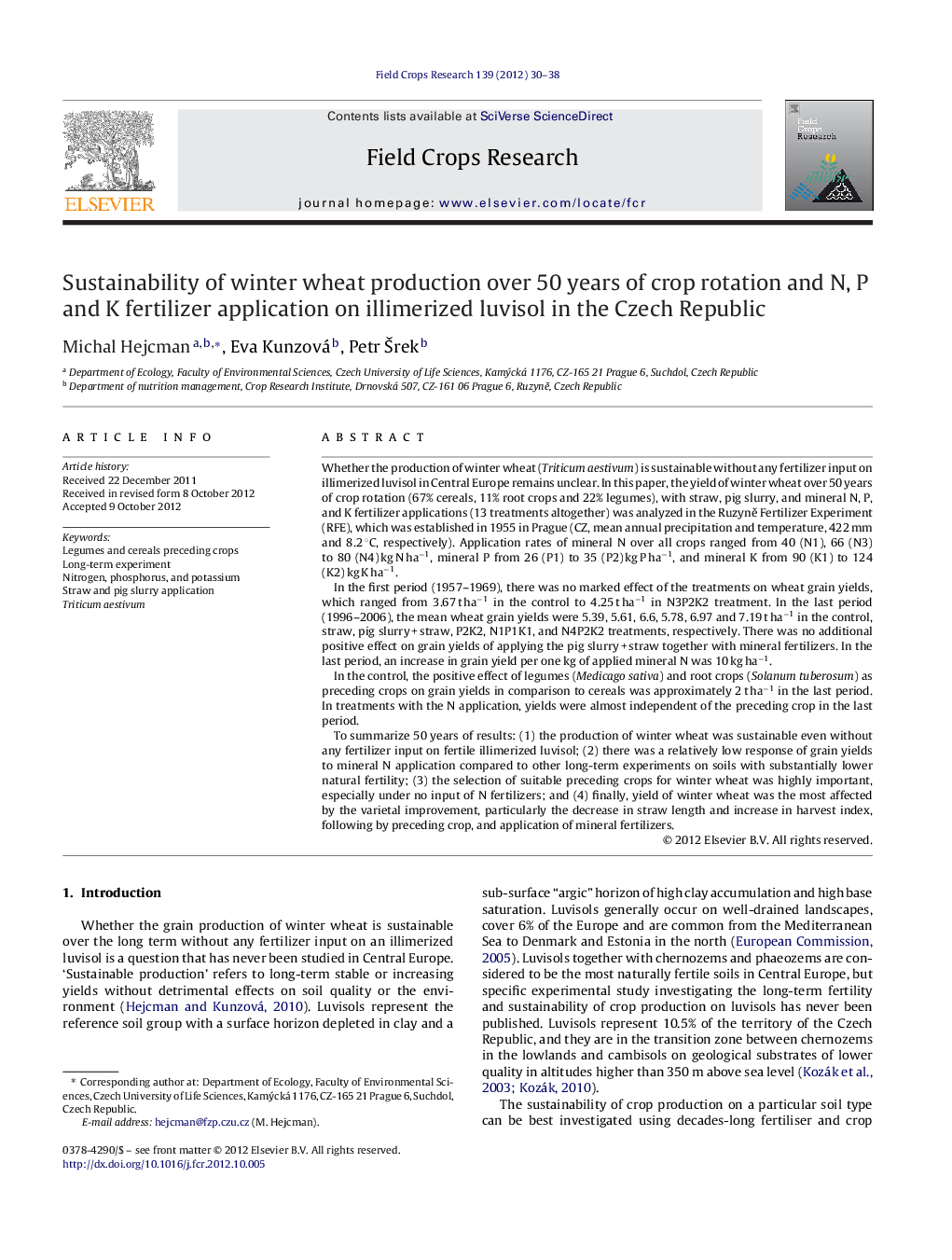| کد مقاله | کد نشریه | سال انتشار | مقاله انگلیسی | نسخه تمام متن |
|---|---|---|---|---|
| 4510382 | 1624724 | 2012 | 9 صفحه PDF | دانلود رایگان |

Whether the production of winter wheat (Triticum aestivum) is sustainable without any fertilizer input on illimerized luvisol in Central Europe remains unclear. In this paper, the yield of winter wheat over 50 years of crop rotation (67% cereals, 11% root crops and 22% legumes), with straw, pig slurry, and mineral N, P, and K fertilizer applications (13 treatments altogether) was analyzed in the Ruzyně Fertilizer Experiment (RFE), which was established in 1955 in Prague (CZ, mean annual precipitation and temperature, 422 mm and 8.2 °C, respectively). Application rates of mineral N over all crops ranged from 40 (N1), 66 (N3) to 80 (N4) kg N ha−1, mineral P from 26 (P1) to 35 (P2) kg P ha−1, and mineral K from 90 (K1) to 124 (K2) kg K ha−1.In the first period (1957–1969), there was no marked effect of the treatments on wheat grain yields, which ranged from 3.67 t ha−1 in the control to 4.25 t ha−1 in N3P2K2 treatment. In the last period (1996–2006), the mean wheat grain yields were 5.39, 5.61, 6.6, 5.78, 6.97 and 7.19 t ha−1 in the control, straw, pig slurry + straw, P2K2, N1P1K1, and N4P2K2 treatments, respectively. There was no additional positive effect on grain yields of applying the pig slurry + straw together with mineral fertilizers. In the last period, an increase in grain yield per one kg of applied mineral N was 10 kg ha−1.In the control, the positive effect of legumes (Medicago sativa) and root crops (Solanum tuberosum) as preceding crops on grain yields in comparison to cereals was approximately 2 t ha−1 in the last period. In treatments with the N application, yields were almost independent of the preceding crop in the last period.To summarize 50 years of results: (1) the production of winter wheat was sustainable even without any fertilizer input on fertile illimerized luvisol; (2) there was a relatively low response of grain yields to mineral N application compared to other long-term experiments on soils with substantially lower natural fertility; (3) the selection of suitable preceding crops for winter wheat was highly important, especially under no input of N fertilizers; and (4) finally, yield of winter wheat was the most affected by the varietal improvement, particularly the decrease in straw length and increase in harvest index, following by preceding crop, and application of mineral fertilizers.
► Yields of wheat grain increased from 3.67 to 5.39 t ha−1 over 50 years without any fertilizer input.
► The mean grain yields of long and short straw varieties were 4.21 and 6.0 t ha−1, respectively.
► The best preceding crops for wheat yield were legumes and root crops, and the worst were cereals.
Journal: Field Crops Research - Volume 139, November–December 2012, Pages 30–38